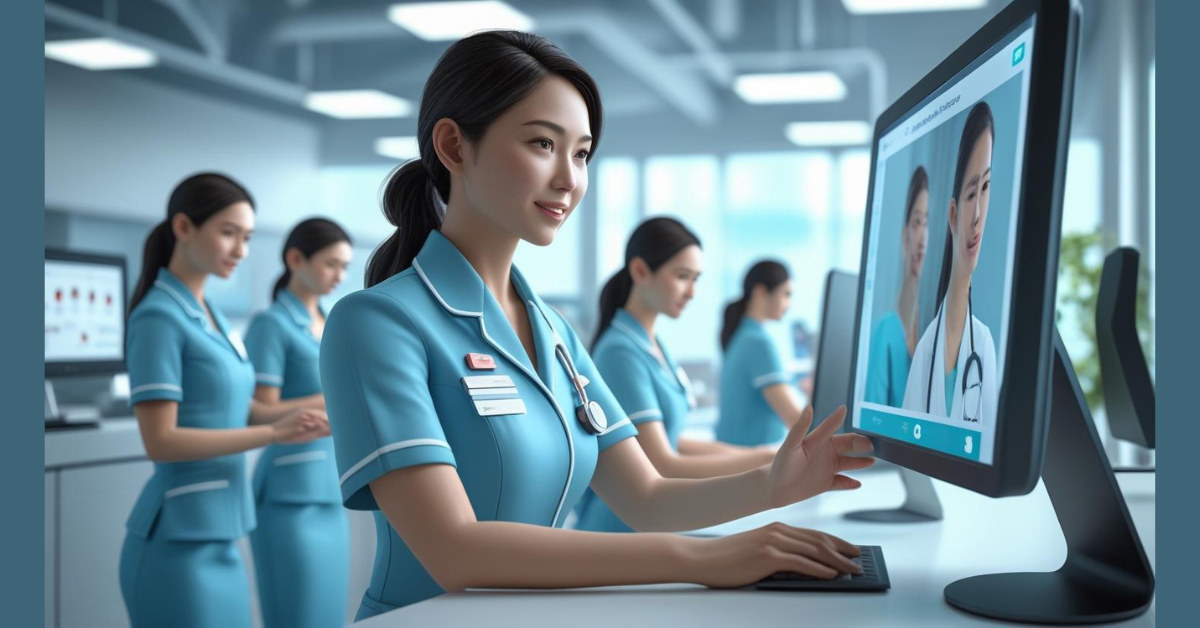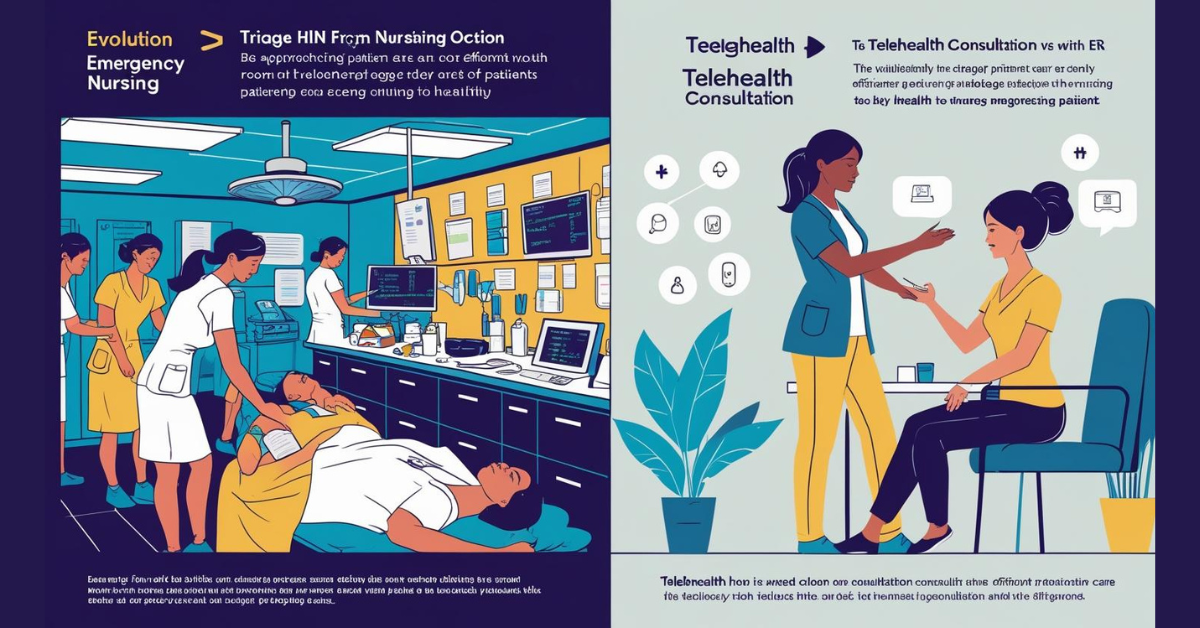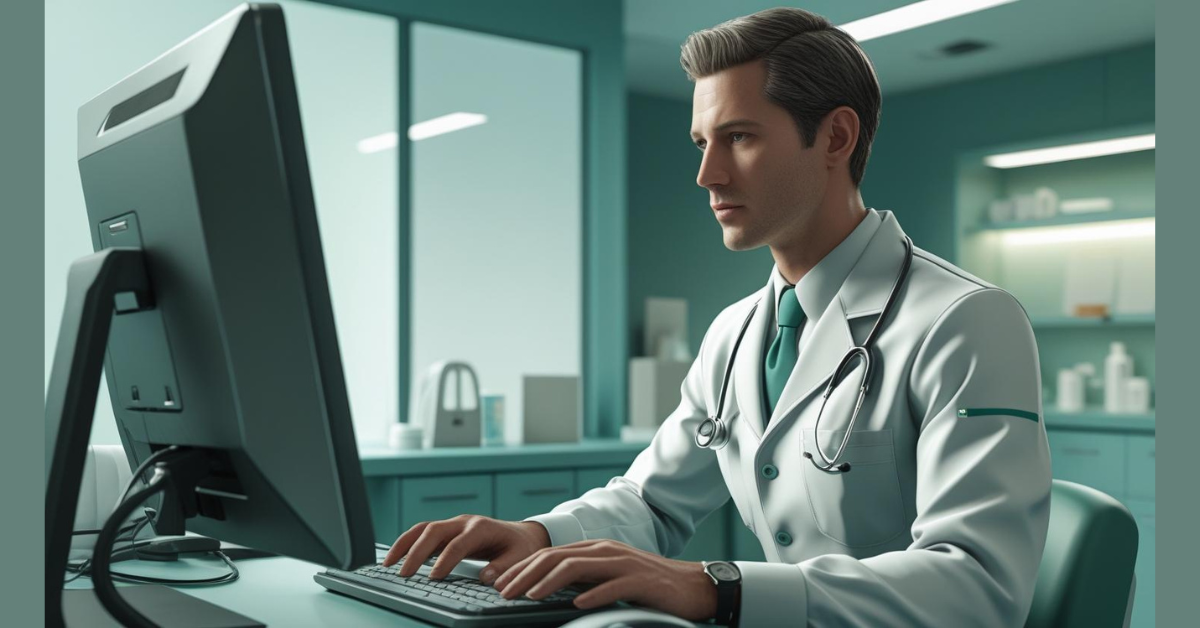What Is From ER to Telehealth How Triage Nurses Shape Efficient Patient Care Delivery. Triage nurses are essential in both traditional EDs and telemedicine, playing a key role in efficiently assigning patients to the appropriate level of care.
In Healthcare From ER to Telehealth How Triage Nurses Shape Efficient Patient Care Delivery
In EDs, they assess patients and prioritize treatment based on severity to ensure the most critically ill patients are seen first. Telemedicine expands their reach, allowing triage nurses to assess patients remotely, evaluate in-person care needs, and provide guidance for self-care or follow-up. This translates into shorter wait times in EDs, more efficient resource allocation, and better patient outcomes.
Introduction
The healthcare scene has experienced sensational change over the past decade, with triage medical caretakers developing as significant figures in reshaping how patients get to and get care. From their conventional parts in bustling crisis offices to their growing nearness in telehealth stages, triage medical caretakers have gotten to be the modelers of effective understanding care conveyance. This advancement speaks to not fair a alter in area or innovation, but a crucial reimagining of how healthcare frameworks can optimize assets, progress get to, and upgrade quiet results through vital nursing mastery.
The Traditional ER Foundation: Building Excellence in High-Stakes Environments
The Emergency Department as the Triage Epicenter
Crisis divisions have long served as the demonstrating ground for triage nursing fabulousness. In these high-pressure situations, triage medical caretakers created the foundational abilities that presently interpret over different healthcare conveyance models. The conventional ER triage prepare includes fast understanding appraisal utilizing standardized devices just like the Crisis Seriousness Record (ESI), which categorizes patients into five levels based on keenness and asset needs.
Core Competencies Developed in ER Settings:
The crisis division environment develops one of kind competencies that have gotten to be priceless over healthcare settings. Medical caretakers learn to form split-second choices whereas overseeing different competing needs, regularly with inadequate data. They create design acknowledgment aptitudes that permit them to distinguish inconspicuous signs of disintegration or basic conditions that could be missed by less experienced suppliers.
Resource Management and Flow Optimization:
Conventional ER triage medical attendants got to be specialists in asset allotment, learning to adjust quiet needs with accessible beds, staff, and hardware. This ability set has demonstrated priceless as healthcare frameworks look for to optimize productivity over all benefit lines. The capacity to anticipate asset needs and oversee quiet stream has gotten to be progressively vital as healthcare organizations center on decreasing hold up times and progressing understanding fulfillment.
Crisis Management and Surge Capacity:
Crisis divisions routinely confront surges in understanding volume, characteristic catastrophes, and mass casualty occasions. Triage medical attendants created strong emergency administration abilities, counting fast scale-up of administrations, productive communication conventions, and the capacity to preserve quality care beneath extraordinary weight. These capabilities have demonstrated fundamental amid later healthcare emergencies, counting the COVID-19 widespread.
Documentation and Quality Metrics
Conventional ER triage built up thorough documentation measures and quality measurements that have affected healthcare conveyance over all settings. Key execution pointers such as door-to-provider time, left-without-being-seen rates, and triage precision got to be benchmarks for measuring the adequacy of care conveyance frameworks.
The Telehealth Revolution: Expanding the Triage Paradigm
Technology-Enabled Care Delivery
The integration of telehealth into standard healthcare has made exceptional openings for triage medical attendants to expand their affect past physical clinic dividers. Telehealth triage speaks to a principal move from responsive to proactive care conveyance, empowering medical attendants to caught wellbeing issues some time recently they require crisis intercession.
Virtual Triage Platforms:
Cutting edge telehealth stages empower triage medical caretakers to conduct comprehensive appraisals utilizing video innovation, versatile wellbeing applications, and farther checking gadgets. These stages frequently join clinical choice back frameworks that upgrade nurture judgment whereas keeping up the human component that patients esteem. Virtual triage can handle a wide extend of concerns, from intense indications to inveterate malady administration and preventive care direction.
24/7 Accessibility:
Not at all like conventional healthcare settings with constrained hours, telehealth empowers triage medical attendants to supply round-the-clock get to proficient healthcare direction. This steady accessibility has demonstrated especially profitable for patients with persistent conditions, guardians of youthful children, and people in inaccessible ranges with restricted get to conventional healthcare offices.
Integration with Wearable Technology:
Progressed telehealth stages progressively coordinated with wearable gadgets and domestic observing gear, giving triage medical attendants with real-time physiological information. This data improves appraisal exactness and empowers proactive mediation when patients appear signs of weakening.
Communication Adaptations for Virtual Care
Telehealth triage has required medical caretakers to adjust their communication abilities for virtual situations. Without physical nearness and hands-on appraisal capabilities, medical caretakers must depend more intensely on verbal communication, visual perception, and understanding self-reporting.
Enhanced Questioning Techniques:
Virtual triage medical caretakers have created modern addressing procedures that direct patients through self-assessment whereas gathering comprehensive data. These abilities incorporate educating patients to check their possess crucial signs, portray indications precisely, and recognize caution signs that require prompt in-person care.
Cultural Competency in Virtual Settings:
Telehealth has extended get to assorted understanding populaces, requiring triage medical attendants to create improved social competency aptitudes. Virtual intuitive may show special challenges related to dialect boundaries, innovation education, and social demeanors toward healthcare.
Bridging the Gap: Hybrid Models of Care Delivery
Integrated Care Pathways
Present day healthcare conveyance progressively depends on half breed models that consistently coordinated conventional and virtual care. Triage medical caretakers serve as the orchestrators of these complex care pathways, deciding the foremost fitting setting and level of care for each persistent experience.
Warm Handoffs and Care Coordination:
Triage medical attendants encourage smooth moves between virtual and in-person care, guaranteeing that imperative data takes after patients over distinctive care settings. This coordination part has gotten to be progressively imperative as patients may get care from different suppliers over different stages.
Population Health Management:
Triage medical caretakers presently play pivotal parts in populace wellbeing activities, utilizing information analytics to distinguish high-risk patients and proactively reach out to avoid intense scenes. This move from responsive to preventive care speaks to a essential alter in how triage nursing contributes to generally wellbeing framework objectives.
Technology Integration and Clinical Decision Support
Advanced triage medical attendants work with modern innovation stages that improve their clinical decision-making capabilities whereas keeping up the individual touch that patients esteem.
Artificial Intelligence and Machine Learning:
AI-powered clinical choice bolster frameworks can analyze persistent information, distinguish designs, and give suggestions to bolster triage choices. Be that as it may, the human judgment of experienced triage medical attendants remains fundamental for deciphering complex clinical scenarios and giving compassionate care.
Electronic Health Record Integration:
Consistent integration with electronic wellbeing records empowers triage medical attendants to get to comprehensive quiet histories, medicine records, and past care scenes, in any case of whether the interaction happens in individual or essentially.
Impact on Healthcare Efficiency and Patient Outcomes
Quantifiable Improvements in Care Delivery
The development of triage nursing from ER to telehealth has created quantifiable changes in healthcare effectiveness and persistent results over numerous measurements.
Reduced Emergency Department Utilization:
Compelling telehealth triage has been appeared to decrease superfluous crisis division visits by giving elective care pathways for non-urgent conditions. Ponders show that telehealth triage can redirect 15-30% of potential ER visits to more suitable care settings.
Improved Access to Care:
Telehealth triage has significantly progressed get to healthcare for patients in country ranges, those with versatility confinements, and people with requesting work plans. This moved forward get to have driven to prior distinguishing proof of wellbeing issues and superior administration of unremitting conditions.
Cost Reduction:
The cost-effectiveness of telehealth triage compared to conventional ER visits has made healthcare more reasonable for both patients and healthcare frameworks. The normal fetched of a telehealth interview is altogether lower than a crisis office visit whereas keeping up tall levels of persistent fulfillment.
Patient Satisfaction and Experience
Convenience and Accessibility:
Patients reliably report tall fulfillment with telehealth triage administrations, especially increasing in value the comfort of getting to proficient healthcare direction from domestic. This comfort figure has been particularly critical for guardians of youthful children and people overseeing unremitting conditions.
Continuity of Care:
Telehealth stages empower triage medical caretakers to preserve progressing connections with patients, giving coherence that will be missing in conventional ER settings where patients associated with diverse suppliers amid each visit.
Personalized Care Plans:
The amplified interaction time conceivable in telehealth settings permits triage medical caretakers to create more personalized care plans and give comprehensive quiet instruction which will not be doable in active crisis divisions.
Challenges and Solutions in Modern Triage Nursing
Technology and Digital Divide Issues
Digital Literacy Barriers:
Not all patients have the innovation aptitudes or gear vital to completely utilize telehealth administrations. Triage medical caretakers have had to create methodologies for supporting patients with changing levels of innovation consolation and get to.
Internet Connectivity:
Solid web get to remains a boundary for a few patients, especially in country zones. Healthcare frameworks have had to create reinforcement communication strategies and organizations with community organizations to address these challenges.
Regulatory and Licensing Considerations
Interstate Practice:
Telehealth extension has raised complex questions approximately nursing licensure over state lines. The advancement of multistate nursing compacts has made a difference address a few of these issues, but challenges stay.
Scope of Practice:
Characterizing the suitable scope of hone for telehealth triage medical caretakers has required collaboration between nursing sheets, healthcare educate, and innovation companies to guarantee quiet security whereas maximizing the benefits of virtual care.
Quality Assurance and Risk Management
Clinical Protocol Development:
Health care organizations have to develop complete protocols to arrange remote rules to ensure coherent quality while providing flexibility for clinical evaluation. These protocols must attack when virtual care is appropriate and when patients need to evaluate immediately.
Documentation and Legal Considerations:
The arrangement of Telehealth requires solid documents and clear policies related to patient security, data security and consent to notify virtual care.
Future Directions and Innovations
Emerging Technologies
Artificial Intelligence Enhancement:
The future development in AI technology may provide more sophisticated clinical decision making tools while preserving human care factors.
Remote Monitoring Integration:
The integration of remote monitoring devices with Telehantic platforms will allow nurses to arrange to access physiological data in real time, to improve the accuracy of the assessment and allow active intervention.
Virtual Reality Applications:
Emerging virtual reality technologies may allow more virtual assessments and patient educational experience.
Workforce Development and Education
Specialized Training Programs:
Teaching facilities are developing specialized training programs for nursing care for television talks related to the unique skills needed to provide virtual care.
Competency-Based Certification:
Professional organizations develop certification programs based on skills to confirm the skills of nurses in traditional and virtual classification parameters.
Translation cooperation:
Future training programs can focus on explaining cooperative skills that allow nurses to work effectively with doctors, pharmacists and other health care providers in the virtual group environment.
Policy and Payment Model Evolution
Value-Based Care Integration:
Although health systems continue to progress into value -based payment models, the arrangement of nurses will play an increasingly important role in population health management and prevent expensive activities.
Preventive Care Emphasis:
The future nursing role may focus on preventing and promoting health instead of focusing on solving acute problems.
Conclusion: The Transformative Impact of Modern Triage Nursing
The development of nursing care for the arrangement of emergency services for remote charts shows the basic transformation of providing health care services. The nurses have successfully arranged in adjusting their basic skills – quickly evaluating, critical thinking and compassionate communication – with new technologies and models to provide care services while still playing their essential role as patients and clinical decisions.
This transition has created measurable advantages, especially improving the ability to reach care, reduce health costs, increase patient satisfaction and better manage chronic conditions. The ability to arrange nurses to work effectively on some platforms and care facilities has made it invaluable in modern health systems seeking to optimize effectively while maintaining quality.
Key Success Factors:
The successful expansion of nursing care on various health care models has been activated by a number of main factors. Strong basic training in traditional medical environment has provided the necessary clinical skills for providing virtual care. Investing in technological and training infrastructure allows nurses to effectively use new tools and platforms. The executive director supported the regulations and policies that have facilitated the expansion of nursing practice in new areas.
Future Outlook:
Although health care continues to grow, nurses may be able to play a more central role in coordinating care, health management and preventive care initiatives. Their unique combination of clinical expertise, communication skills and the ability to adapt to their good positioning to continue shaping patient care performance effectively in a range of extended technologies and health.
ER’s trip to Tele-heal only represents the beginning of nursing transformation. When new technologies appear and health care providers continue to develop, nurses arranged will certainly continue to act as an important link between the patient and the complex health system, ensuring that each individual is well cared for, well, Good time, in the right settings.
From ER to Telehealth How Triage Nurses Shape Efficient Patient Care Delivery
From ER to Telehealth How Triage Nurses Shape Efficient Patient Care Delivery
Read More:
https://nurseseducator.com/didactic-and-dialectic-teaching-rationale-for-team-based-learning/
https://nurseseducator.com/high-fidelity-simulation-use-in-nursing-education/
First NCLEX Exam Center In Pakistan From Lahore (Mall of Lahore) to the Global Nursing
Categories of Journals: W, X, Y and Z Category Journal In Nursing Education
AI in Healthcare Content Creation: A Double-Edged Sword and Scary
Social Links:
https://www.facebook.com/nurseseducator/
https://www.instagram.com/nurseseducator/
https://www.pinterest.com/NursesEducator/
https://www.linkedin.com/in/nurseseducator/
https://www.researchgate.net/profile/Afza-Lal-Din
https://scholar.google.com/citations?hl=en&user=F0XY9vQAAAAJ


